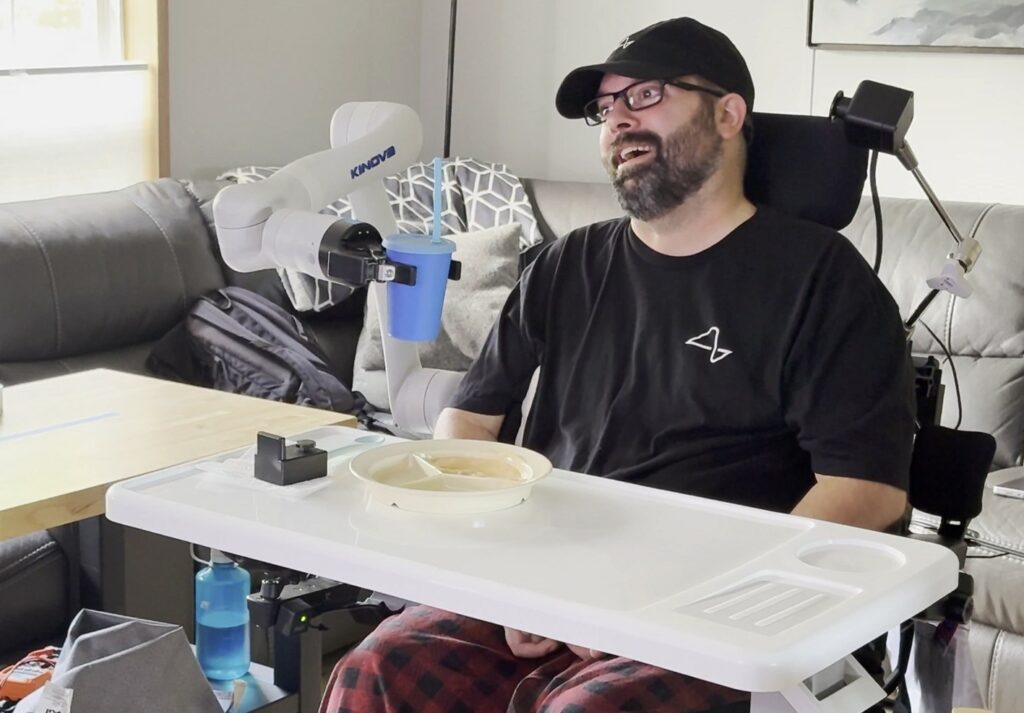
American Nick Ray , who suffers from amyotrophic lateral sclerosis, described spending three days controlling his robotic arm (ARA) using the Neuralink neural interface. He described it as one of the most incredible experiences of his life.
Ray observed that, for the first time in many years, he was able to wear a hat, heat food, eat, open the refrigerator and close the lids on jars.
He even tried his hand at wheelchair operation and set personal records: he moved 39 cylinders in five minutes and performed five precise movements in a dexterity test. He promised to post a video of his achievements.
He thanked the Neuralink team and the Buoniconti Fund for the opportunity to participate in the project and emphasized that technology is restoring lost opportunities. Ray is also working on his cryptography project , which he said has become a way to explore something completely new and demonstrates how connected communication interfaces (BCIs) can help not only with physical activity, but also with digital activity.
Neuralink describes the trial’s goal as restoring basic motor skills and independence in people with severe movement disorders . The company continues to test the brain-computer interface and publishes trial details on its official website.
Previously, in September 2024, Neuralink received FDA approval to test a vision-restoring implant. In November of that year, the company unveiled a mind-controlled prosthesis that allowed patients to grasp and move objects.
In April 2025, Neuralink demonstrated how the implant could restore speech: the system recognized intentions and synthesized speech based on neural signals. One of the first steps involved experiments with cursor control and mind-controlled games, in which the patient controlled a computer without moving.
And in September 2025, the company unveiled plans to translate thoughts into text, allowing people to communicate directly and control devices through a neural interface.
Follow us on Google News to receive daily updates on cybersecurity. Contact us if you would like to report news, insights or content for publication.
